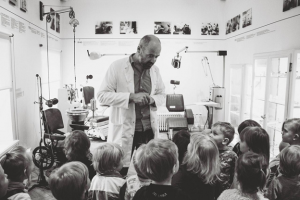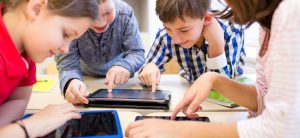Technology has significantly changed how people think and live. Before, it would take months or years to send a message to someone from the other side of the globe. Now it’s as simple as a few taps on a smartphone. The world has never been more connected as it is today.
Communication isn’t the only thing has been made easier. Getting food is as easy as making one phone call before the food is delivered to one’s doorstep, ready to be consumed. Transportation has also made massive leaps. Someone living in the United States can arrive in Japan in just a matter of hours by plane.
Many industries have benefited from the advancement of technology. One of which is the field of education.
The Importance of Technology in Education
Long before schools were established, learning and education were left in the hands of families. Knowledge and skills were handed down from generation to generation. Soon, knowledge became too complex and too broad to confine. The ancient Egyptians, Mesopotamians, and Chinese created schools to train the youth to be the next rulers, scribes, doctors, builders, and teachers. But education was mostly reserved for the privileged.
Thousands of years later, school is open to almost everyone, whether rich or poor, young or old. It’s an understatement to say that technology played a crucial part in this development. Books were few and rare, so those who owned these treasures would guard them with their lives and kept these items within the family. The invention of printing made it easier to share books and writings.
But books aren’t the greatest results of technology, rather, the contents in books are technology’s greatest contributions. Through the advancements in technology, humans were able to gain greater knowledge and understanding of the world.
It is also through technology that they are able to spread and apply knowledge into results that make human lives easier and the world a more livable place. In short, technology has refined education and made it relevant, and it continues to do so.
Learning through Technology
Computers, smart machines, and the internet have made information more accessible. Whereas before you browse through books to answer some questions, now you can just go to the World Wide Web for solutions. Technology has undoubtedly made learning much easier.
Inside the classroom, technology is a valuable assistant to a teacher. It helps bridge the gap between the abstract and the concrete for understanding and learning to happen. Before projectors, LCDs, computers, and the internet, teachers relied on the chalk, the board, and their own skills to illustrate to teach students about things they can’t perceive with their five senses. Now it is easier to show how the earth revolves around the sun or how daytime changes into nighttime with videos and other forms of media.
Students learn about plants and animals they’ve never seen with their own eyes through pictures and documentaries. They learn about what the world and the things around them are made of, how everything works, how the human body functions, and many other things, which were made possible by technology.
Teachers and students alike now have unfettered access to the latest information, events, and discoveries. For example, when scientist declared that Pluto was no longer a planet, teachers and students didn’t have to wait for the information to be published in books to learn about it. The news was all over the TV and the internet in a matter of hours. Multimedia and the internet, which were made possible by advancements in technology, are valuable resources for learning in schools and in everyday life.
Technology has also given rise to tools that allow people to explore the world and discover new things. Take virtual reality, for example. It can be a valuable tool in the classroom to help students gain experience and apply their learning with minimal preparation and materials needed.
There are also useful educational apps that are assisting students in learning. For instance, the app Duolingo helps another language. Kami 2 tests your logic and problem-solving skills. Synap helps you revise for your exams. Educational experiences that used to take more preparation and resources are easier to arrange now with modern technology.
Reshaping the Future
The people of today now have sophisticated machines that help them in performing tasks and doing their jobs. Writers no longer have to painstakingly record their ideas on paper. They have portable smart typewriters and sophisticated devices for writing.
Doctors can make more accurate diagnoses with the help of medical machines. Scientists observe the world better and find solutions to problems with all the smart tools available today. Almost everything has been refined and made easier with the use of technology.
Technology has revolutionized the field of education. It has changed how information is gathered, relayed, processed, and applied. Furthermore, it has transformed the curriculum of the world. Students are now learning to navigate two worlds, the physical and the digital. They are learning to survive in a world where jobs can be performed remotely with a computer, where almost everything can be done digitally.
As technology advances, the focus of education also shifts. There’s less emphasis on learning labor skills and more emphasis on skills that are needed in the digital age, such as communication, problem-solving, programming, etc.
Moving Forward
Technology has changed the world. It has also rewritten history. Some facts that were taught before are no longer true now. Pieces of information that were revolutionary in the past are now considered outdated. Old practices are dying, but new ones are also emerging. In the future, education will go beyond schools and head to the greater world community.
Teachers will no longer be the only source of knowledge in the classroom, while students will stop being passive receptacles of information. The teacher will use technology to facilitate activities and experiences that will help student learning. Similarly, students will gain knowledge, understanding, and learn through the assisted use of technology.















